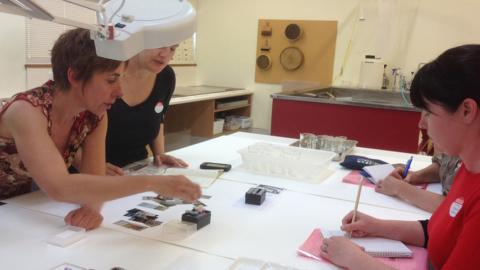

Testing photographic material

The Image Permanence Institute of Rochester (IPI) makes it their business to test photographic material of all types, for all types of stability issues. These include exposure to light, contaminants and chemicals. Part of the Rochester Institute of Technology College’s Department of Imaging Arts and Sciences, the Institute just celebrated their 25th anniversary. The IPI started life in 1985 with four staff and now has 15, including part-time staff and interns. George Eastman House has an internship in place with the IPI. Projects that have come out of the IPI include a study into acetate film longevity; this led to the development of the acetate storage guide wheel, now used by archives as a preservation tool.

IPI Research Scientist, Doug Nishimura, gave me a tour of the institute, outlining the various areas and processes that take place. The facility has a number of testing rooms that put photographic material through such tortures as high temperatures and humidity, pollutant contaminants, high light levels to test for fading and ozone exposure.
The IPI have discovered that the harshest stainers to images include: coffee, soy sauce and mustard. I think we have all seen a coffee ring on a paper item.
The IPI have a large number of fact sheets and guides available on their website that cover photographic preservation and permanence issues.
The National Film and Sound Archive of Australia acknowledges Australia’s Aboriginal and Torres Strait Islander peoples as the Traditional Custodians of the land on which we work and live and gives respect to their Elders both past and present.


